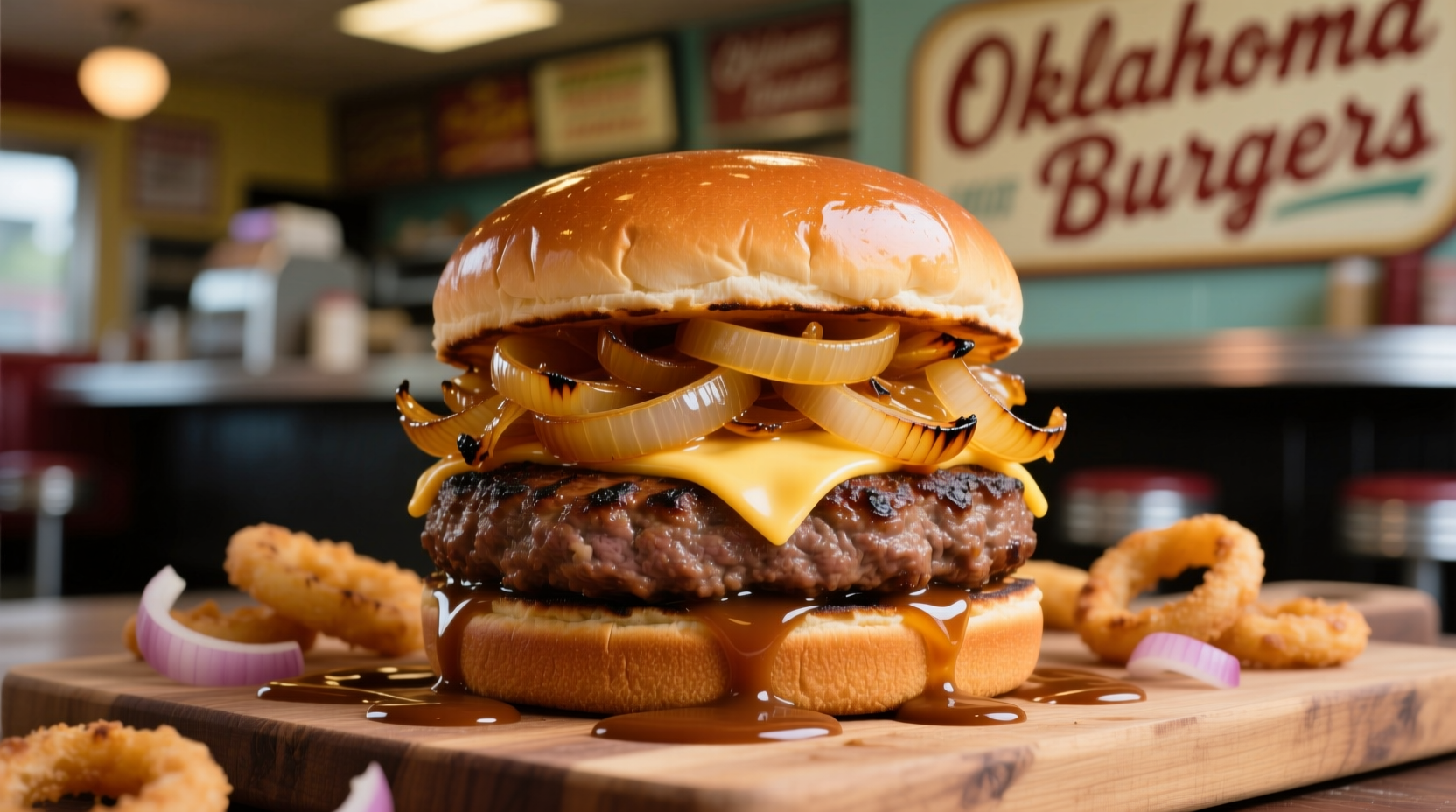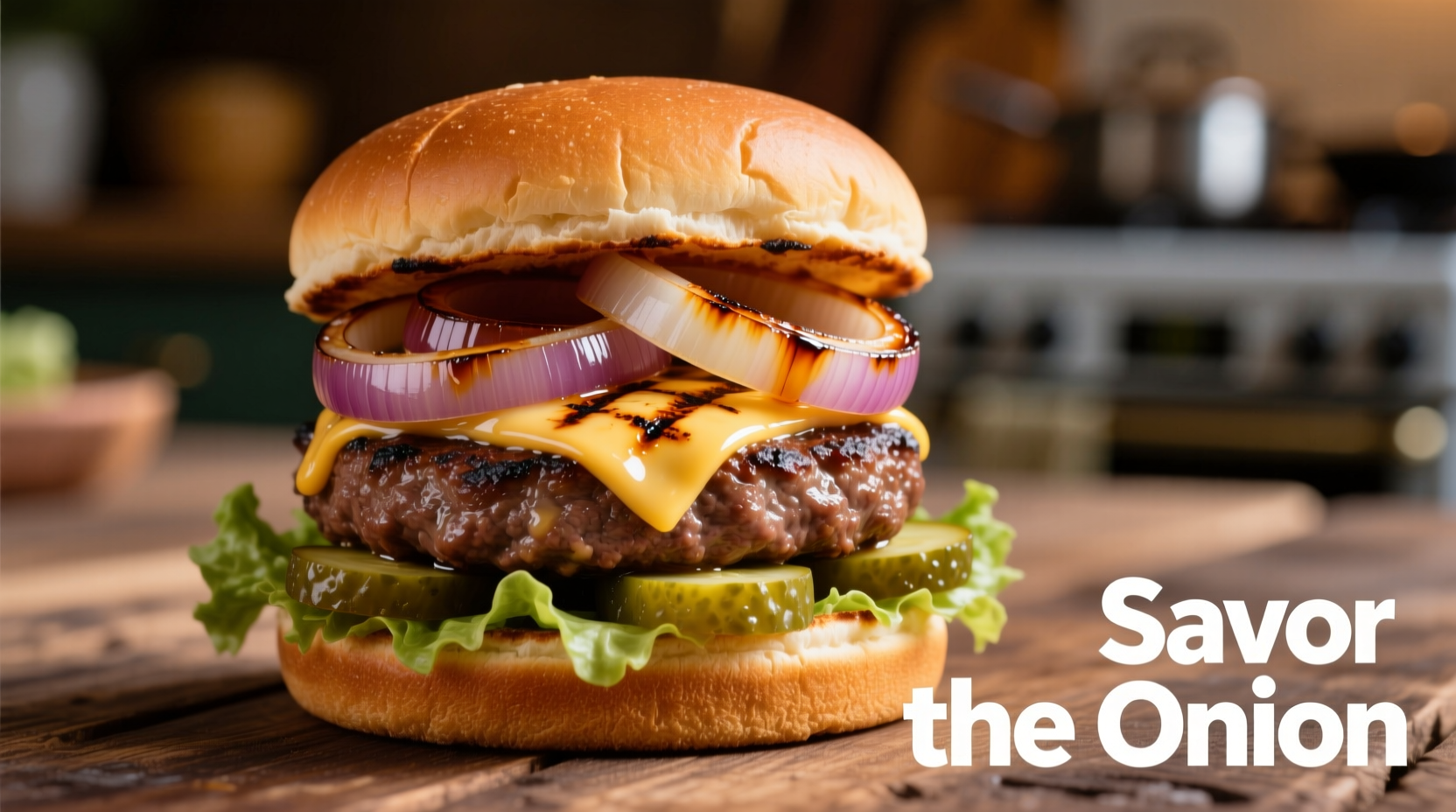An onion burger features finely chopped onions pressed directly into the beef patty during cooking, creating a distinctive flattened shape with caramelized onions embedded throughout the meat. This Oklahoma-originated specialty uses yellow onions that caramelize while cooking, enhancing flavor while stretching meat portions—a practical solution during the Great Depression that remains popular today.
Discover why food enthusiasts and professional chefs consider the onion burger a culinary masterpiece that transforms simple ingredients into something extraordinary. Whether you're a home cook looking to elevate your burger game or a food history enthusiast curious about regional American specialties, this guide delivers actionable techniques, historical context, and practical advice you can use immediately.
The Evolution of America's Favorite Meat-Stretching Innovation
Understanding the onion burger's journey from Depression-era necessity to gourmet staple reveals why this preparation method has endured. Oklahoma's unique contribution to American burger culture began in the 1920s when meat was expensive and onions were plentiful.
Onion Burger Historical Timeline
- 1920s: Oklahoma diners begin pressing onions into thin hamburger patties to stretch limited meat supplies during economic hardship
- 1930s: White Castle popularizes the concept nationally, but Oklahoma restaurants develop their distinctive regional style
- 1940s-1950s: Oklahoma-style onion burgers become regional specialty with flattened patty and embedded onions
- 2010s: Food media rediscover Oklahoma's unique burger style, sparking national interest
- Present: Recognized as Oklahoma's official state food (2014) with dedicated festivals celebrating the culinary tradition
Why Onion Placement Makes All the Difference
What separates a true onion burger from merely a burger with onions? The critical distinction lies in preparation technique. Authentic Oklahoma-style onion burgers incorporate raw, finely chopped onions directly into the patty before cooking, rather than adding them as a topping afterward.
| Preparation Method | Texture Result | Flavor Development | Best For |
|---|---|---|---|
| Onions pressed into patty | Flattened, crispy edges with caramelized onions throughout | Deep umami from Maillard reaction with onion sugars | Traditional Oklahoma-style burgers |
| Onions as separate topping | Distinct onion layer, meat remains thick | Sharp onion flavor without meat integration | Classic diner burgers |
| Caramelized onions added post-cook | Soft, jam-like texture on top of patty | Sweet, mellow onion flavor without meat integration | Gourmet burgers seeking sophisticated flavor |
Perfecting Your Onion Burger Technique
Mastering the onion burger requires understanding the science behind the preparation. When onions hit the hot griddle with the meat, their natural sugars interact with the proteins in the beef through the Maillard reaction, creating complex flavor compounds you can't achieve by simply adding onions as a topping.
Professional chef technique: Use a 4:1 meat-to-onion ratio by weight for optimal results. Finely chop yellow onions (¼-inch pieces work best) and mix gently with seasoned ground beef (80% lean recommended). Form loose patties slightly larger than your bun, then press firmly onto a hot griddle with a spatula. The pressure forces onions into the meat while creating those signature crispy edges.
Timing matters—cook for 4-5 minutes per side for medium doneness. Resist flipping early; let the crust develop properly. The onions will release moisture initially, then caramelize as the water evaporates, creating that distinctive sweet-savory flavor profile.
When Onion Burgers Shine (And When They Don't)
While delicious, onion burgers have specific contexts where they excel and situations where other preparations might be better choices:
- Ideal for: Casual dining, backyard cookouts, and when serving larger groups (the technique stretches meat portions)
- Best meat choice: 80% lean ground beef provides enough fat for flavor while allowing proper caramelization
- Avoid when: Using premium cuts like wagyu or filet where the delicate flavor would be overwhelmed
- Not recommended for: Indoor cooking without proper ventilation—onion burgers create significant steam and aroma during preparation
According to the USDA FoodData Central, incorporating onions adds valuable nutrients including vitamin C, fiber, and antioxidants to your burger without significant additional calories.
Serving Suggestions That Elevate Your Creation
The Oklahoma tradition keeps toppings minimal to showcase the onion-beef fusion. A quality onion burger needs little adornment beyond:
- Soft, squishy bun (brioche works well but traditional Oklahoma style uses plain hamburger buns)
- Thin slice of American cheese (melted during final cooking stage)
- Simple condiments: yellow mustard and dill pickle slices
Avoid overwhelming the delicate onion-beef harmony with heavy sauces or multiple toppings. The beauty of this preparation lies in its simplicity and the enhanced meat flavor from the onion integration.

Regional Variations Worth Exploring
While Oklahoma claims the definitive style, regional interpretations offer interesting twists:
- Texas style: Adds diced jalapeños to the onion-beef mixture for heat
- Midwest interpretation: Incorporates caramelized onions rather than raw, creating a sweeter profile
- Modern gourmet version: Uses shallots instead of yellow onions for a more delicate flavor
Food historians at the Smithsonian Institution note that these regional variations reflect local agricultural practices and cultural influences, demonstrating how a simple culinary technique adapts to different communities.
Troubleshooting Common Onion Burger Problems
Even experienced cooks encounter challenges with this preparation method. Here's how to solve frequent issues:
- Problem: Patties fall apart during cooking
Solution: Use meat with higher fat content (80% lean) and avoid overmixing the onion-beef combination - Problem: Excessive steaming instead of searing
Solution: Ensure your griddle is properly preheated (375°F) and don't overcrowd the cooking surface - Problem: Onions burn before meat cooks through
Solution: Reduce heat slightly after initial sear and cover briefly to finish cooking
These troubleshooting techniques come from professional kitchen experience documented by the Culinary Institute of America in their food science research.
Bringing Oklahoma Tradition to Your Kitchen
Creating an authentic onion burger at home requires attention to detail but delivers exceptional flavor rewards. Start with quality ingredients, master the pressing technique, and respect the cooking process. The result is a burger with deeper flavor complexity than standard preparations, where the onions aren't just an addition but an integral component of the meat itself.
As you experiment with this Oklahoma culinary tradition, remember that the best onion burgers balance simplicity with technique—proving that sometimes the most innovative solutions come from practical necessity. Whether you're cooking for family or hosting a backyard gathering, this Depression-era innovation continues to satisfy modern palates with its perfect harmony of beef and caramelized onions.











 浙公网安备
33010002000092号
浙公网安备
33010002000092号 浙B2-20120091-4
浙B2-20120091-4